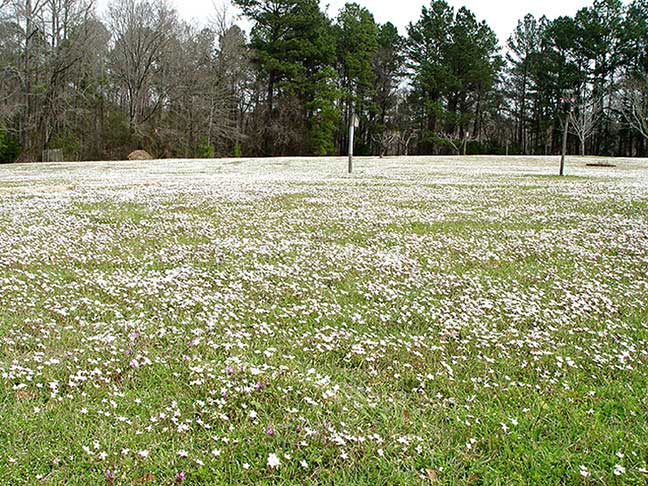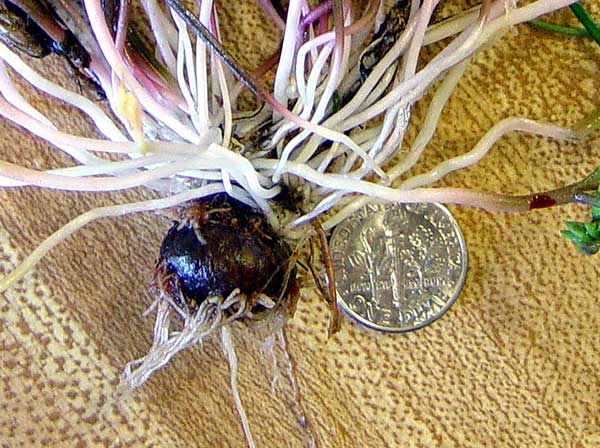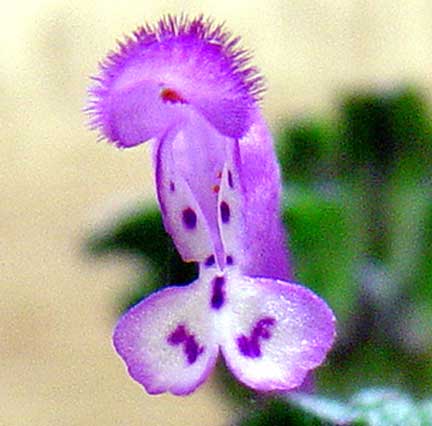RiskVA
The Beauties of the Season 24 Jun 2015
Spring, the Vernal Equinox, is only 8 days away. On the 20th of this month, the day and night will be very close to equal in length. We will then leave winter and enter the spring season.
Spring Snow or Spring Beauty?
Last spring we hosted a surprise Easter snow storm that carpeted the ground with white. And just last Friday we had a repeat snow performance with about an inch accumulation, a rare even in East Texas. But, for more than a week now, my back yard has looked snowy, but the cause is a tiny white wildflower called spring beauty that is covering the ground with riotous blooms. Although purists call this little wildflower a weed, I like them. They turn our lawn into a mountain meadow and I’m always sorry when the growing grass forces me to mow them down.
Spring beauty is not only beautiful, it arises from an edible brown corm (a bit like a tuber) about the diameter of a dime that eaten raw tastes like chestnuts. They can also be boiled or sautéed and served with butter. However, it takes a determined forager to make a meal of them since they are so small and require much scraping and grubbing to dig them up.
In times past, the dried and powdered corms of the spring beauty were used to treat convulsions in children and as a contraceptive. One reference mentions it as a “permanent” contraceptive. But I know a number of people who have eaten the tubers and are still plenty fertile! Nevertheless, any plant that has medicinal properties should be eaten with caution and – sorry about this – at your own risk.
Little Purple Accents
Another neat little wildflower that flourishes in my lawn this time of year is henbit. A square-stemmed member of the mint family, henbit produces tiny purple flowers that resemble miniscule snapdragons. The plant is about 3 to 5 inches tall with small, rounded deep green leaves in pairs that clasp the plant stem at their base. If you closely examine the bloom, you’ll see a tiny Schnauzer staring back at you. Its friendly dog-like face is complete with a fuzzy topnotch, eyes, eyebrows, nose and jowls. You’ll have to look closely though because the flowers are only a half-inch long and a quarter of an inch across. Try viewing one with a magnifying glass. Henbit is an early source of nectar and on sunny days honeybees flock to it. Their purple flowers contrast nicely against the spring beauty blooms.
Henbit leaves have been eaten in salads, although they’re too bitter for my taste. They can also be boiled briefly and served like spinach with butter and seasoning. Since ancient times henbit has been used to treat arthritis (rheumatism), induce sweating and as a stimulant. It was also used as a laxative and as a substance to expel intestinal parasites.
Earliest Easter You’ll Ever See
With spring comes Easter. It always falls on the Sunday following the first full moon after the Vernal Equinox. Since the Equinox occurs on March 20 and the moon is full on the 21st, Easter this year lands on March 23rd. According to the rules established by the Catholic Church hundreds of years ago, Easter can fall anywhere between March 22nd and April 25th.
This will be the earliest Easter in the 250 years between 1875 and 2124. If you are over 95 years of age you experienced an Easter this early in 1913. But for many of us this will be the first and only experience like this. It won’t happen again until the year 2124.
Spring in the Piney Woods is a beautiful time of awakening and freshening; a time for all things, including us, to take on new vigor. It is a time of rejuvenating – meaning literally to regain lost youth. So take heart. Recognize your potential once again and acknowledge the many opportunities we have to right wrongs, take a fresh lease on life, shuck off past disappointments and frustrations and move forward with renewed enthusiasm, faith and hope. For me it is an energizing season and hopefully for you as well.
Dr. Risk is a professor emeritus in the College of Forestry and Agriculture at Stephen F. Austin State University in Nacogdoches, Texas. Content © Paul H. Risk, Ph.D. All rights reserved, except where otherwise noted. Click paulrisk2@gmail.com to send questions, comments, or request permission for use.



